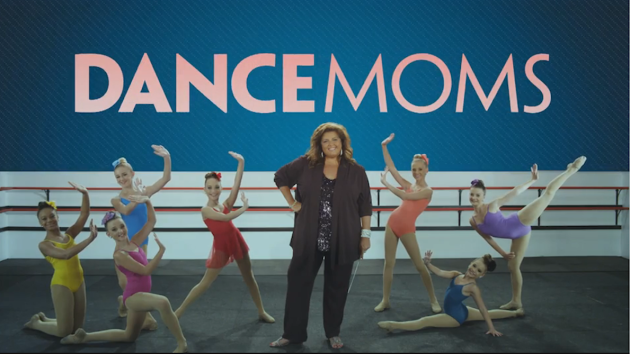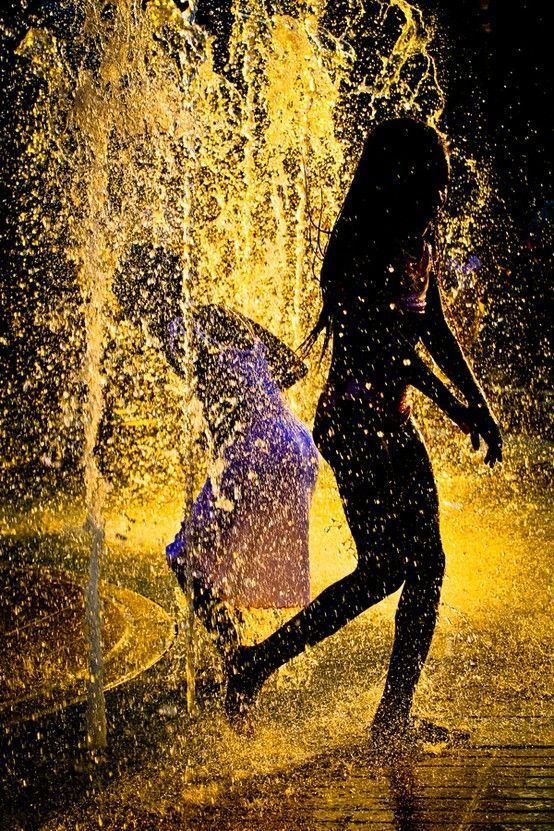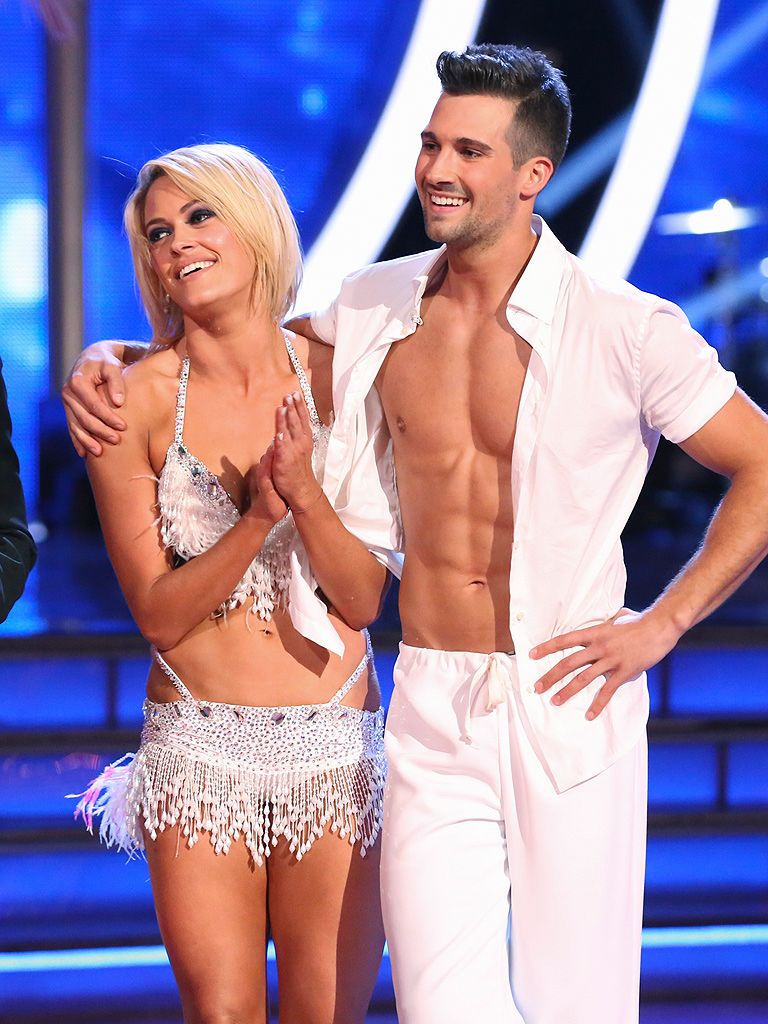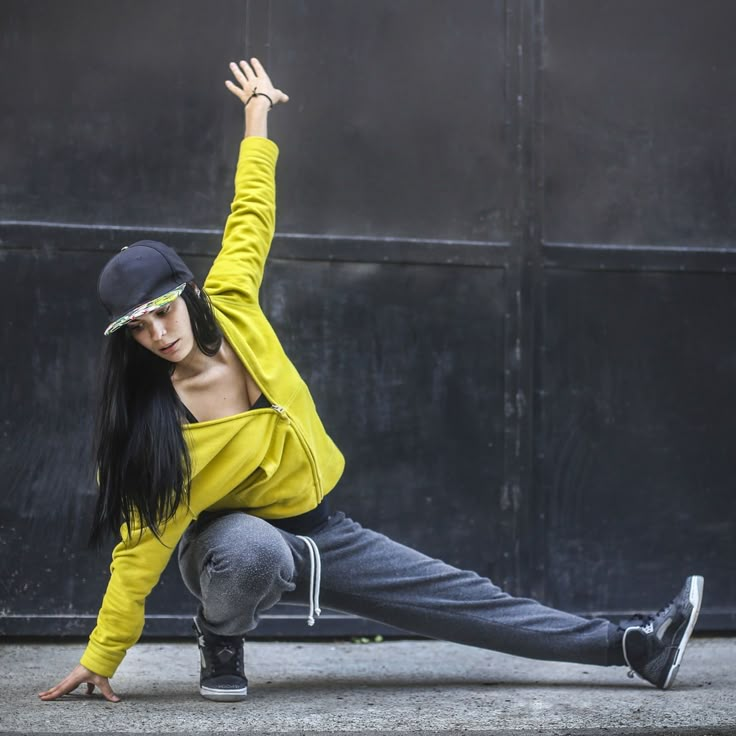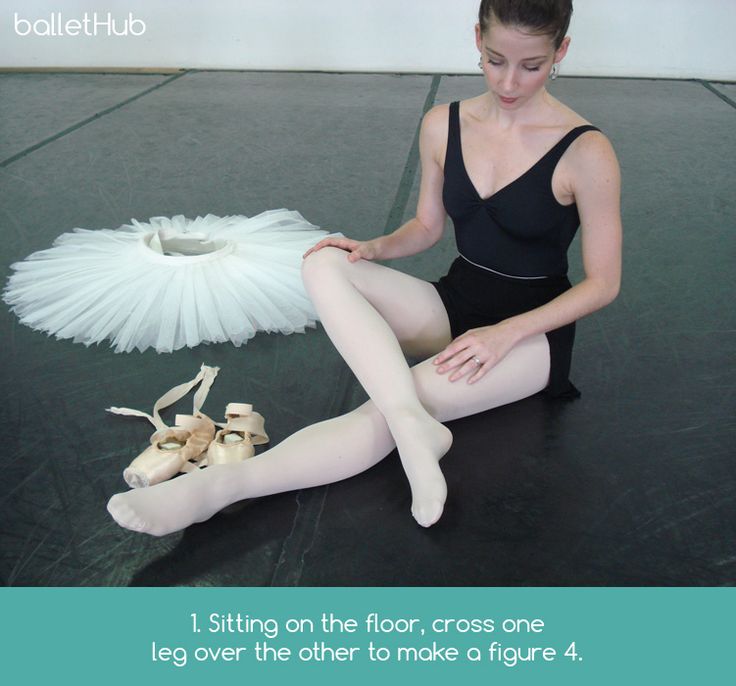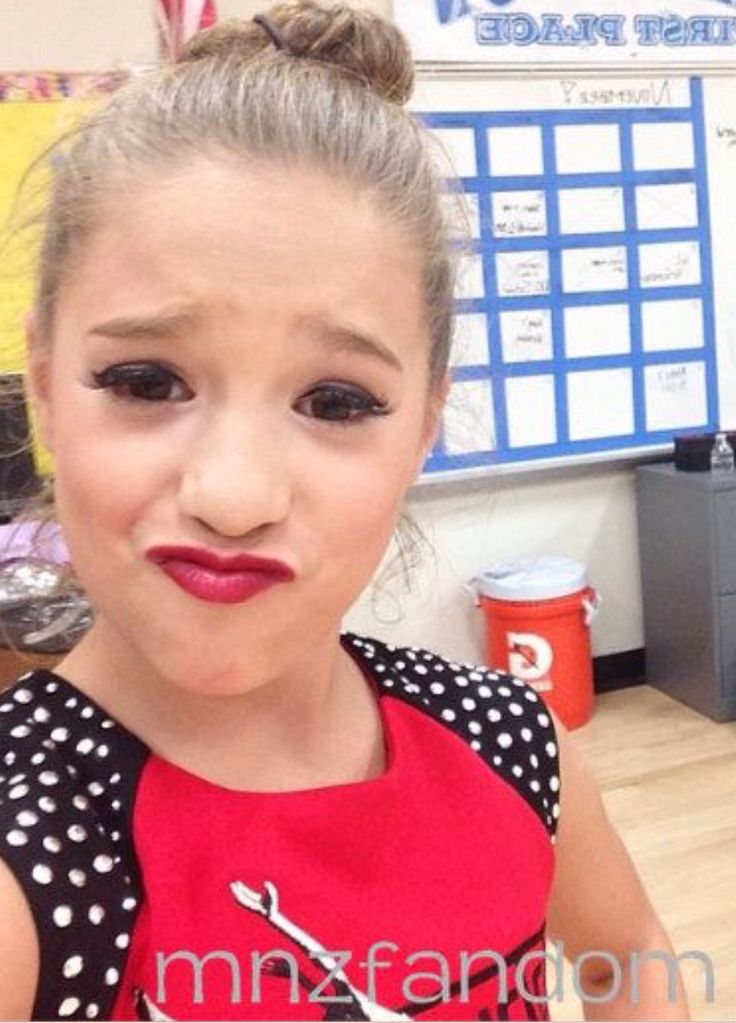How to dance and not look like an idiot
How to Dance At A Basic "Good Enough" Level
- Chris MacLeod, MSW
It's hard to avoid dancing entirely in social situations, especially when you're younger. Arguably, everyone should at least become passable at it. It's not as hard to pick up the basics as you may think, and it's smoother sailing once you can join some friends who want to dance and hold your own.
You don't have to reach a particularly high standard
You just need to be good enough that you can get on the dance floor, blend in with everyone else, not look like an idiot, and not feel overly uncomfortable while you're there. (Lots of people are at least somewhat awkward about dancing. That's why they have to down a few drinks and wait for the dance floor to get busy before they step out on it.)
You don't have to look like someone out of a music video. You've just got to be decent enough to get by. Being better than the minimum never hurts of course, but just knowing the basics will put you way ahead of all the non-dancers out there.
If you're straight, try not to worry too much about what the opposite sex thinks. They don't have ultra-picky standards
Straight people don't purely dance to impress the opposite sex, but it is often something they think about.
For guys
Generalization time. Women and men have different ideas of what a good dancer is. Guys often see dancing as a skill to show off. Being better than other dudes on the dance floor is important to them. Their typical image of a "good dancer" is a gymnastic break dancer doing a bunch of flips, or a guy doing a fancy, fluid Popping & Locking routine. A woman's concept of a good dancer is a closer to a passably moving guy who looks comfortable, confident, and like he's having fun.
When a woman wants to dance with you, all she really wants is that...
- You are there with her
- You are dancing with her
- You are not dancing horribly
- You are not being too forward and creepy
For women
This totally sounds like a simplistic stereotype, but most of the time when you're dancing with a guy he's not making a detailed critique of your style. He's probably just thinking, "Yay! I'm dancing with a woman!" Or if he's watching you dance from farther away, he's likely thinking, "She seems like someone I might want to talk to. I wonder if she'd shoot me down though..." Even if he seems like the most genuinely suave, confident guy ever, he's probably still thinking like that on some level. He's probably fifty times more worried about how his dancing looks to you than the other way around. Even he's an amazing dancer and you're not, he likely isn't holding it against you.
He's probably just thinking, "Yay! I'm dancing with a woman!" Or if he's watching you dance from farther away, he's likely thinking, "She seems like someone I might want to talk to. I wonder if she'd shoot me down though..." Even if he seems like the most genuinely suave, confident guy ever, he's probably still thinking like that on some level. He's probably fifty times more worried about how his dancing looks to you than the other way around. Even he's an amazing dancer and you're not, he likely isn't holding it against you.
(That was from my observations as a straight guy. I'm not gay so I won't try to write from their perspective, but I can't imagine their standards for dance partners are radically different.)
Try not to worry too much about what strangers think
Easier said than done, but don't use up too much mental energy fretting about how random bystanders are judging you. Occasionally people will snicker and point to people who are dancing because they're really just too nervous to do it themselves.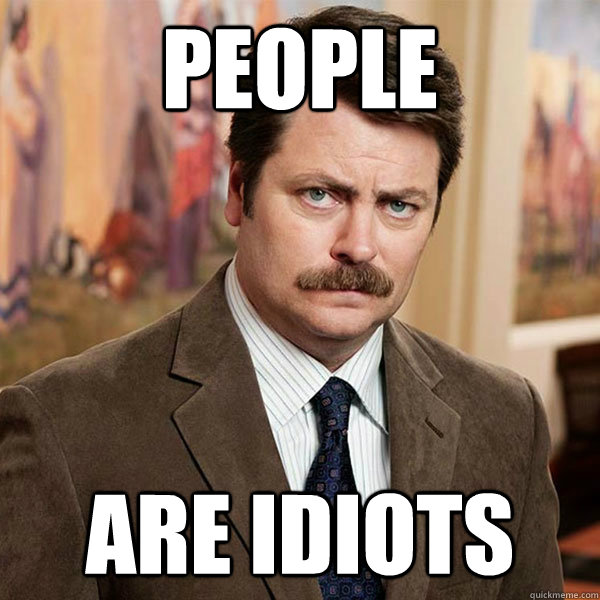 Random dudes sucking on their beer aren't your audience. Also, like the point above mentioned, your average dancer is more preoccupied with how they look than anything.
Random dudes sucking on their beer aren't your audience. Also, like the point above mentioned, your average dancer is more preoccupied with how they look than anything.
If there's one thing to keep in mind it's to be toned-down and low key
Don't be a spaz and try to pull off some fancy moves unless you 100% know you'll look good doing them. It's better to reel yourself in. Over reaching and flailing around is worse than blending in and being a bit boring and unoriginal. Don't feel you have to pull off tons of new moves every second and put on a show for everyone either. It's okay to dance in a simple, repetitive way and just enjoy your friends' company.
Acquire a basic, reliable dancing 'core'
You know when you're watching a movie or TV show and there's a scene set in a dance club, how the extras in the background will often to be dancing in a kind of simple, nondescript way? That's the 'core' I'm talking about. If you know how to do that, then in a lot of situations that's actually all you need. However, if you want, you can later choose to build off your base and make your style more fancy.
However, if you want, you can later choose to build off your base and make your style more fancy.
To get that core stand in front of a mirror with some not-too-fast music on, or just read along and imagine you're doing the following:
- To dance you've got to move your body in time to the beat of the music. The most basic newbie mistake you can make is to move out of sync with the beat. Don't know the beat I'm referring to? Put on a song and listen for the underlying, repeating thump-thump-thump pattern. Every style of music has a different speed. It doesn't take much practice to learn how to hear it.
- Okay, you're just standing there in front of the mirror with some song playing. Now try moving your arms back and forth to the beat slightly, while keeping your legs ramrod straight. You'll notice that looks totally off. So the next most basic thing you've got to do is bounce up and down on your knees. So keep everything else still, and just move your knees up and down to the music.

- That still looks weird, since you're just going up and down like a piston. So rotate your torso a bit in time with your knee movements, a little like you're skiing. Keep your torso fairly loose and relaxed.
- That's looking better, but your arms are still stiffly hanging at your side. So try relaxing them a bit and let them swing up and down with your knee bends and torso rotations.
Once you're standing in one spot, bouncing on your knees, turning your torso a bit, and moving your arms somewhat, that's about the absolute bare minimum you can do to be considered dancing. Like I said, sometimes that's all you need. If you didn't know how to dance at all, and stopped right here, that's a lot better than nothing.
However, while still staying in the realm of dancing in a super generic 'core' way, you can do little things to spice up the bare minimum:
- Don't just limply swing your arms, get your shoulders into it.
- Take steps side to side, or back and forth.

- Mix up your arm movements.
- Nod your head.
- Do little pivots or twists on one foot, or both feet.
- Don't just slightly rotate your torso, move it back and forth, or from one side to the other.
- Pick up one foot ever so slightly, then the other, to kind of march in place. Don't overdo the movement and look like a robot, just move your feet a tad.
- Mix up the possible arm, torso, and leg variations. Find a combination that looks good and do it for a while, then switch to another one. Don't change things up to the point where you're doing something new every half a second. That looks too scattered.
At this point you're hardly going to win a dance competition, but you're at the level of those movie extras, and 75% of the people you'll see out at a bar. At this point you really could develop no further in your dancing ability and be able to get by on a dance floor for the rest of your life.
The thing with this basic core is that it's pretty adaptable to the standard kinds of music you'll come across.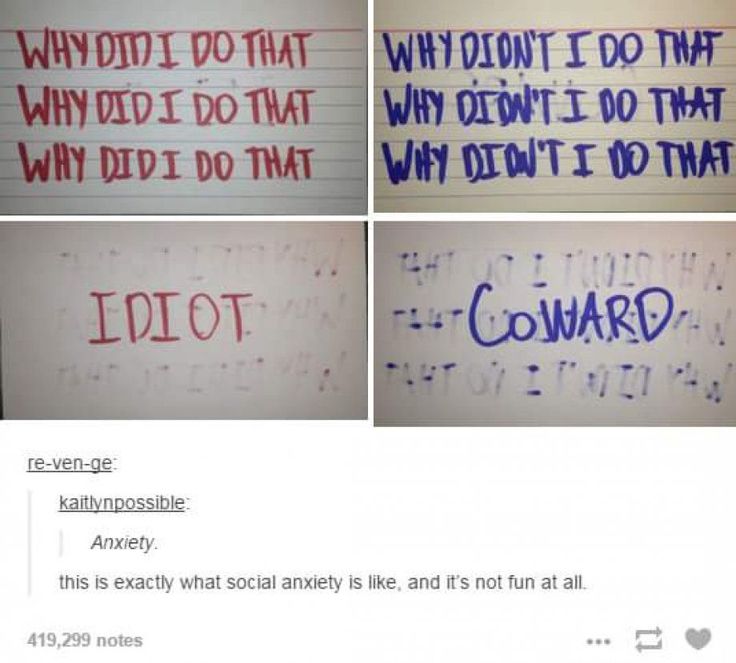 If you're dancing to Hip Hop, just make all your movements a little more Hip Hop-ish. If you're dancing to retro 80's Pop, just make all your moves a little more cheesy and energetic.
If you're dancing to Hip Hop, just make all your movements a little more Hip Hop-ish. If you're dancing to retro 80's Pop, just make all your moves a little more cheesy and energetic.
Add some more fancy moves and sequences onto your core if you want to
If you dance in a basic way you'll get by, but you won't stand out a ton. If you want to look a little slicker you can start adding in some canned movements, or sequences of moves. There's more of a Risk/Reward thing going on at this stage. You've got to work at it more as well. Dancing generically is safer and easier. If you try to pull off some awesome routine and bungle the execution you'll look clueless or goofy. You need to practice to make sure you look good. Some places to learn new moves are:
- By watching strangers dancing at a club and stealing ideas from them.
- By watching your friends dance.
- By watching movies or music videos.
- Through online video tutorials.
- Through dancing-oriented video games.

- By experimenting and trying to come up with some moves of your own.
- By taking an actual class.
The best way to learn is to just practice
If you get into the habit of dancing around at home in the spare moments you're listening to music it won't be long before you start to get the hang of things. After that the more time you put in, the more you'll refine your style.
Get in front of a mirror, put some good music on, and start dancing to it in the basic way I mentioned above. Remember, if your instinct is to jump around a lot or be a bit spazzy, consciously tone yourself down. Try to get comfortable with the typical, boring way of dancing first. A lot of the time on actual dance floors you won't have that much room anyway, so if you only practice moves that requires a lot of space you'll be put in an awkward spot when you end up somewhere more packed.
One way to deliberately practice is to try working on one aspect of dancing at a time, then putting the pieces together. This may not look good in the moment, but it'll let you concentrate on and isolate certain aspects of how you move. So you might keep everything else fairly still, and only try out different arm movements, or ways of moving your torso. Or you could try different ways of stepping back and forth, or moving only one leg at a time.
This may not look good in the moment, but it'll let you concentrate on and isolate certain aspects of how you move. So you might keep everything else fairly still, and only try out different arm movements, or ways of moving your torso. Or you could try different ways of stepping back and forth, or moving only one leg at a time.
Article continues below...
Practice different dancing scenarios
Aside from figuring out how to move your body, there are different situations you'll find yourself dancing under:
Dancing on a dance floor where you have a lot of room
This is the easiest as you have all the space you need, and you can do somewhat more showy stuff if you feel like it. Sometimes the ocean of space can feel like too much to work with or make you feel exposed and self-conscious though.
Dancing on a crowded dance floor
Here your movements are really restricted. When you're practicing make sure to keep your feet rooted to the ground and don't swing your arms out too much. Try to make your movements look good anyway.
Try to make your movements look good anyway.
Dancing close and face to face with someone else
The issue here is knocking knees and not being able to extend your arms too far in front of you. Try dancing really close to a wall to get an idea of what it's like. Or you can try dancing really close to a full length mirror. It's totally goofy looking, but it's still a good way to get used to the feeling of being near someone.
Dancing with a partner
Here I'm referring to partner dancing in an informal, improvised way, not doing a specific dance like the Tango. Of course this is something that you can't practice on your own super effectively. Still, you could put your hands out in front of you like you're holding someone's waist or shoulders and practice moving within that restriction. I don't blame you if you don't want to do this. It's definitely a bit silly. Still, if the idea of dancing with someone makes you uncomfortable, practicing like this can take the edge off.
More practical advice would be to take a salsa, swing, or ballroom dancing class, asking your friends to teach you to dance, or practicing with your partner, if you're seeing someone. If it doesn't make you anxious, you could even try going to a club and trying to dance with someone you meet there.
Non-verbal communication is important as well
Body language plays a role in dancing too. It would look strange if someone was dancing to a 70's funk song with the mannerisms and facial expressions of someone listening to 90's Gangsta Rap. You don't want to be too exaggerated or hammy with your body language, but it is something to subtly bring into the equation. The other basic thing about body language is that sometimes the difference between someone who looks good and so-so on the dance floor is their non-verbals. If someone looks uncomfortable and bored, they may come across as dancing poorly. The same movements with some energy and confidence can look fine.
Dancing is a physical activity
Simple tip here. The better shape you're in, the easier dancing will be. You'll be able to do more, have more energy, and keep at it for longer. Basic things like aerobic fitness, flexibility, and some endurance in your legs and torso help.
The better shape you're in, the easier dancing will be. You'll be able to do more, have more energy, and keep at it for longer. Basic things like aerobic fitness, flexibility, and some endurance in your legs and torso help.
Dancing to an unfamiliar style
For the poppy dance music you most typically hear in bars and clubs you can usually get away with dancing in the generic style I outlined earlier. Though if you've ever been to a club that caters to a different scene you'll know other genres of music have their own types of dancing.
If you're in one of these places, it's not the end of the world if you go ahead and dance the usual generic way, and just try to make your movements conform somewhat to that subculture's style. You won't fit in perfectly, but no one is going to run you out of the joint. However, if you're interested in dancing to that type of music more in the future, it's obvious that you'd want to try to learn its more specialized moves.
A semi-warning about dance classes
Without a doubt you'll learn a lot if you a take a class, but sometimes people get a shock when they then go to a club and have to dance spontaneously. They can't just start swing dancing or bust out a 14-step choreographed Hip Hop routine. There are people who have taken years of dance classes, but they're inhibited when it comes to dancing at clubs. They feel lost, put on the spot, and like they're expected to perform.
They can't just start swing dancing or bust out a 14-step choreographed Hip Hop routine. There are people who have taken years of dance classes, but they're inhibited when it comes to dancing at clubs. They feel lost, put on the spot, and like they're expected to perform.
Dancing badly on purpose
I think there's a good time and a bad time to dance in a poor or silly way as a joke. The bad time to do it is when you're not comfortable or experienced with dancing, and you dance like goofball to avoid having to do it for real. People tend to see through this, and any humor that comes out of it only has a shelf life of a minute or so.
The good time to do it is when you're with some friends, you all know how to dance properly, and you just throw in the occasional campy movement or routine as a way to joke around and have more fun. It comes off well in this situation because everyone realizes you're doing it because you choose to, not because you're trying to hide how ill at ease you feel.
Drinking to loosen yourself up
Lots of people need to get some alcohol in them before they feel confident enough to hit the dance floor. In a perfect world everyone would feel comfortable dancing stone cold sober, but realistically some of us need a little extra help. Within reason I think this is fine.
When alcohol tends to be helpful is when someone knows how to dance half-decently, but are just a smidgen reserved - most people basically. When drinking tends to backfire is when someone doesn't really know how to dance, and never tries unless they're totally hammered. The results can be pretty sloppy. Things can also get embarrassing if someone is just learning how to dance and is inclined to be spazzy. The alcohol tends to bring those tendencies to the surface.
In conclusion
This is a trite thing to say, but despite everything you've just read, you should just enjoy yourself and not over analyze things. Have fun and don't worry about what other people think of you. Blah Blah Blah. The end.
Blah Blah Blah. The end.
The Importance of Dancing Like an Idiot
One of the strangest but also most intriguing and redemptive things that humans get up to, in almost any culture one cares to study, is occasionally to gather in large groups, bathe in the rhythmic sounds of drums and flutes, organs and guitars, chants and cries, and move their arms and legs about in complicated and frenzied ways, losing themselves in the bewilderment of a dance. Dancing has a claim to be considered among the most essential and salutary activities we ever partake in. Not for nothing did Nietzsche, a painfully inhibited figure in day to day life, declare ‘I would believe only in a God who could dance’ (a comment that stands beside his equally apodictic pronouncement: ‘Without music, life would be a mistake.’)
But dancing is at the same time an activity that many of us, arguably those of us who might most need to do it, are powerfully inclined to resist and deep down to fear. We stand on the side of the dance floor appalled at the possibility of being called to join in, we attempt to make our excuses the moment the music begins, we take pains that no one will ever, ever see our hips unite with a beat.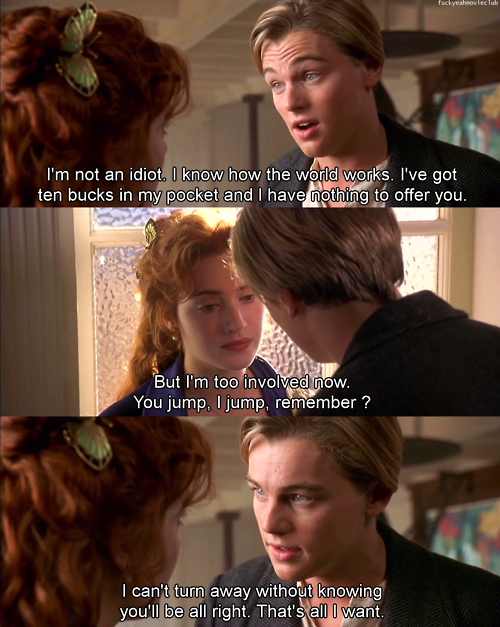
The point here is definitely not to learn to dance like an expert, it is to remember that dancing badly is something we might actually want to do and, equally importantly, something that we already well know how to do to – at least to the level of appalling proficiency we need to possess in order to derive key benefits.
In almost all cultures and at all points of history (except oddly enough perhaps our own), dancing has been widely and publically understood as a form of bodily exercise with something very important to contribute to our mental state. Dancing has had nothing to do with dancing well, being young or revealing one’s stylishness. Summed up sharply we might put it like this: dancing has been valued for allowing us to transcend our individuality and for inducing us to merge into a larger, more welcoming and more redemptive whole.
The Ancient Greeks were for the most part committed worshippers of the rational mind. Their foremost God, Apollo, was the embodiment of cool reason and disciplined wisdom. However, the Greeks understood – with prescience – that a life devoted only to the serenity of the mind could be at grave risk of desiccation and loneliness. And so they balanced their concern with Apollo with regular festivals in honour of a quite different God, Dionysus, a god that drank wine, stayed up late, loved music – and danced.
However, the Greeks understood – with prescience – that a life devoted only to the serenity of the mind could be at grave risk of desiccation and loneliness. And so they balanced their concern with Apollo with regular festivals in honour of a quite different God, Dionysus, a god that drank wine, stayed up late, loved music – and danced.
A break from individualism and reason: Dionysius (also known as Bacchus to the Greeks and Romans) leading a dance. Bouguereau, The Youth of Bacchus, 1884
The Greeks knew that the more rational we usually are, the more important it is – at points – to fling ourselves around to the wild rhythms of pipes and drums. At the festivals of Dionysius, held in Athens in March every year, even the most venerable and dignified members of the community would join into unrestrained dancing that, irrigated by generous amounts of red wine, lasted until dawn.
A word often used to describe such dancing is ‘ecstatic’. It’s a telling term. Ecstatic comes from two Latin words: ex (meaning apart) and stasis (meaning standing) – indicating a state in which we are symbolically ‘standing apart’ from ourselves – separated from the dense, detailed and self-centered layers of our identities which we normally focus on and obsess over and reconnected with something more primal and more necessary: our common human nature. We remember, through a period of ecstatic dancing, what it is like to belong, to be part of something larger than ourselves, to be indifferent to our own egos – to be reunited with humanity.
Ecstatic comes from two Latin words: ex (meaning apart) and stasis (meaning standing) – indicating a state in which we are symbolically ‘standing apart’ from ourselves – separated from the dense, detailed and self-centered layers of our identities which we normally focus on and obsess over and reconnected with something more primal and more necessary: our common human nature. We remember, through a period of ecstatic dancing, what it is like to belong, to be part of something larger than ourselves, to be indifferent to our own egos – to be reunited with humanity.
This aspiration hasn’t entirely disappeared in modernity – but it’s been assigned to very particular and woefully selective ambassadors: the disco and the rave. These associations point us in unhelpful directions: towards being cool, a certain age, wearing particular clothes, liking a certain kind of often rather arduous music. Such markers of an elite, knowing crowd reinforce, rather than dismantle, our tendencies towards isolation and loneliness.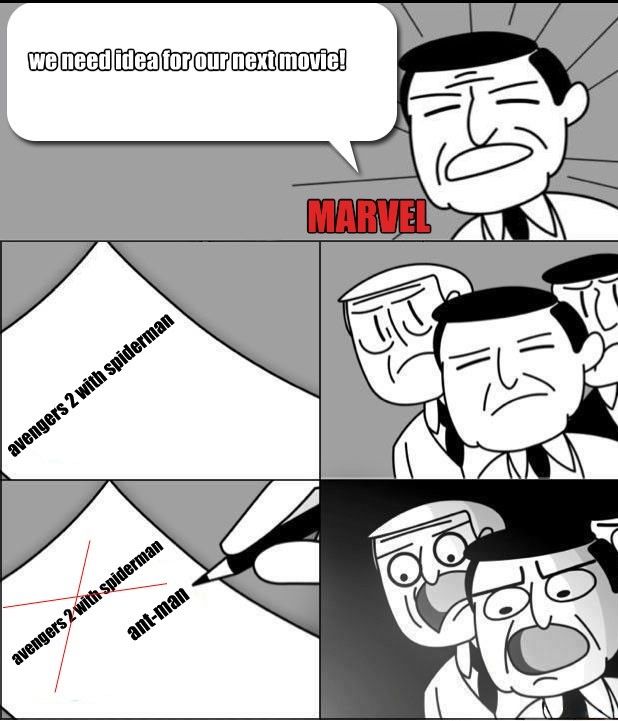
We need, urgently, to recover a sense of the universal benefit and impact of dancing. But the greatest enemy of this is fear, and in particular, the fear – as we may put it – that we will look ‘like an idiot’ in front of people whose opinion might matter. The way through this is not to be told that we will in fact appear really rather fine and, with a bit of effort, very far from idiotic. Quite the opposite; we should accept with good grace that the whole point of redemptive, consoling, cathartic communal dancing is a chance to look like total, thoroughgoing idiots, the bigger the better, in the company of hundreds of other equally and generously publically idiotic fellow humans.
We spend a good deal of our time fearing – as if it were a momentous calamity that we did not even dare contemplate in daylight – that we might be idiots and holding back from a host of important aspirations and ambitions as a result. We should shake ourselves from such inhibitions by loosening our hold on any remaining sense of dignity and by accepting frankly that we are – by nature – of course completely idiotic, great sacks of foolishness that cry in the night, bump into doors, fart in the bath and kiss people’s noses by mistake – but that far form being shameful and isolating, this idiocy is in fact a basic feature of our nature that unites us immediately with everyone else on the planet. We are idiots now, we were idiots then, and we will be idiots again in the future. There is no other option for a human to be.
We are idiots now, we were idiots then, and we will be idiots again in the future. There is no other option for a human to be.
Dancing provides us with a primordial occasion on which this basic idiocy can be publicly displayed and communally celebrated. On a dance floor filled with comparable idiots, we can at last delight in our joint foolishness; we can throw off our customary shyness and reserve and fully embrace our dazzling strangeness and derangement. An hour of frantic jigging should decisively shake us from any enduring belief in our normalcy or seriousness. We will no longer be able to bully others, persuade them of our superiority, humiliate them for their mistakes or pontificate at length on weighty matters. We will no longer worry how others see us or regret a few things we said to intimidating strangers. The gentle aches in our limbs and our memories of our moves will remind us of anchoring facts that will guarantee our ongoing sanity and kindness.
Whenever we have the chance to invite others around, especially very serious people by whom we’re intimidated or whom we might be seeking to impress, we should remember the divine Dionysus and dare, with his wisdom in mind, to put on Dancing Queen, I’m so excited or We are Family. Knowing that we have Nietzsche on side, we should let rip with a playlist that includes What a Feeling, Dance with Somebody and Hey Jude. We should lose command of our normal rational pilot selves, abandon our arms to the harmonies, throw away our belief in a ‘right’ way to dance or indeed to live, build the intensity of our movements to a frenzy, gyrate our heads to empty them of their absurd worries, forget our jobs, qualifications, status, achievements, plans, hopes and fears – and merge with the universe or at least its more immediate representatives, our fellow new mad friends, before whom the disclosure of idiocy will be total.
Knowing that we have Nietzsche on side, we should let rip with a playlist that includes What a Feeling, Dance with Somebody and Hey Jude. We should lose command of our normal rational pilot selves, abandon our arms to the harmonies, throw away our belief in a ‘right’ way to dance or indeed to live, build the intensity of our movements to a frenzy, gyrate our heads to empty them of their absurd worries, forget our jobs, qualifications, status, achievements, plans, hopes and fears – and merge with the universe or at least its more immediate representatives, our fellow new mad friends, before whom the disclosure of idiocy will be total.
Looking like an idiot shouldn’t be a risk: it’s the point.
Around us might be a formally shy accountant, an efficient dental nurse or a white haired school principal bending and flinging their arms in the air, throwing their heads back, contorting their bodies. After a few songs, something astonishing will begin to happen: it won’t matter any more that we said a slightly out of place thing in a meeting two weeks ago, that we haven’t yet met the love of our lives or that we still don’t understand very much at all.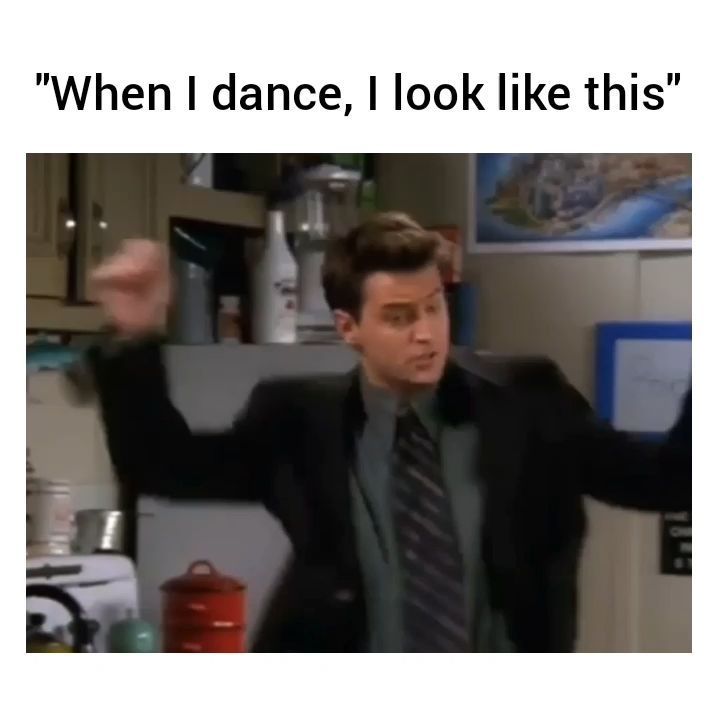 We will feel a part of something far more important than ourselves, a supportive community in which our individual errors and doubts will cease to weigh so heavily and punishingly upon us.
We will feel a part of something far more important than ourselves, a supportive community in which our individual errors and doubts will cease to weigh so heavily and punishingly upon us.
Through a dance, we glimpse a huge project: how we might more regularly experience ourselves as vulnerable in front of other people in order to become better friends to ourselves and more generous and compassionate companions to others. The true potential of dancing has for too long been abandoned by thoughtful people to stylish ambassadors who have forgotten the elemental seriousness of allowing themselves to be and look idiotic. We should reclaim the ecstatic dance and uninhibited boogie woogie for their deepest universal purposes: to reconnect, reassure and reunite us.
How to dance at a party: advice from British GQ editor-in-chief Dylan Jones
The main thing to remember when throwing yourself on the dance floor: no one is looking at you.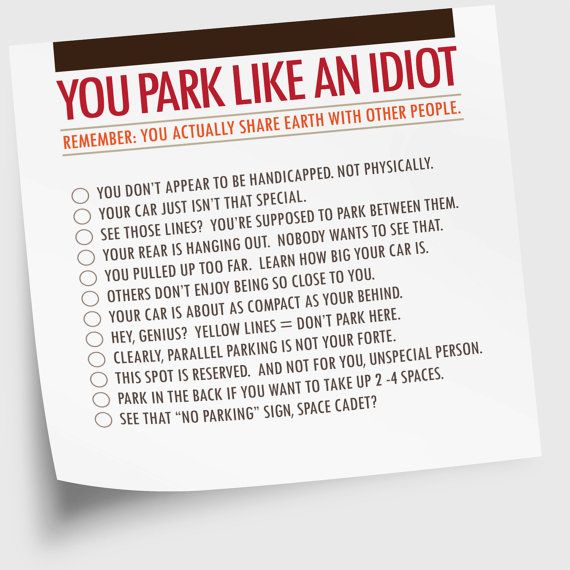 Do not be afraid that you will be laughed at and that everyone is just waiting for you to get tangled in your own feet. Believe me, no one is interested in this, especially if you behave decently.
Do not be afraid that you will be laughed at and that everyone is just waiting for you to get tangled in your own feet. Believe me, no one is interested in this, especially if you behave decently.
In the event that your dancing experience is zero - or if you once tried and did not like it - you need to learn two simple truths first. Firstly, women like it when a man dances well, so if you are a complete layman in this matter, you should strain yourself. Secondly, no one expects great things from you in all your endeavors. Personally, I am able to dance to anything, but when a DJ puts on I'm So Excited by The Pointer Sisters or something in the style of drum and bass, I immediately leave the dance floor. Not because I don't like such compositions - although at my age it would be forgivable - but because they are difficult to dance to. Not everyone can rock to any song, so if it has too many beats per minute, or a particularly jagged rhythm, or is too slow (like Just Be Good to Me by the SOS Band), feel free to go to the bar.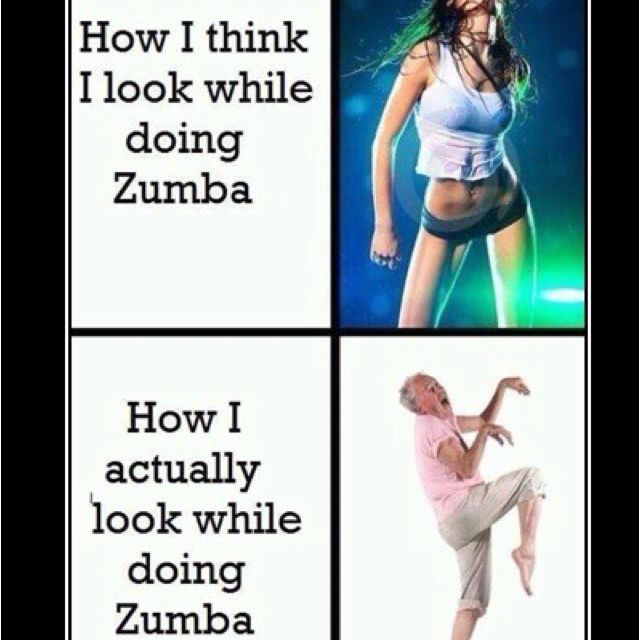 Don't like reggae? Run to the toilet. Can't help laughing at the new Coldplay hit? Sit down.
Don't like reggae? Run to the toilet. Can't help laughing at the new Coldplay hit? Sit down.
If you don't know how to dance at all, but circumstances require it, move by feel. Do not kick your legs - work with your body; bending your elbows, squirm with dignity to the beat of the music. It's really easy! Soon you will become bolder and begin to vary your dance moves; do it in proportion. No one expects you to turn into John Travolta - all his exploits in "Saturday Night Fever" were staged by a professional choreographer, so you should not go out of your way.
A few more important points. Don't slow dance unless you're holding a woman in your arms. Don't try to act like Bruce Springsteen from the Dancing in the Dark video or Kevin Bacon from the movie Loose and dance like a rocker, throwing out your arms and legs at the same time, like a drunken doll. It would also be nice to learn some traditional dance - for example, tango. The easiest way to learn is the twist, which can be danced to anything from Chubby Checker to George Michael's Faith. Put your foot slightly in front of you and start spinning on it, wobbling your hips; then “screw” yourself into the floor without bending your back, and then “unscrew” back up in the same way.
Put your foot slightly in front of you and start spinning on it, wobbling your hips; then “screw” yourself into the floor without bending your back, and then “unscrew” back up in the same way.
If you want to learn something spectacular, try the Highland Fling, one of the oldest Scottish dances. Raise your left hand and use it to draw the letter "c" above your head. Place your right hand on your thigh so that the thumb is pointing down and the other fingers are pointing back. With the emphasis on the left leg, stretch the right leg all the way and make a quarter-turn jump. Place your right foot behind the ankle of your left and again jump in a quarter turn, stretching your right leg as far as possible to the right side. Then do another quarter-turn jump, keeping your right foot in front of your left ankle (toes pointing to the floor). Repeat the movement, changing the right leg to the left and vice versa.
When the song ends, bow gracefully with a George Clooney grin. And remember: courage and recklessness are not the same thing.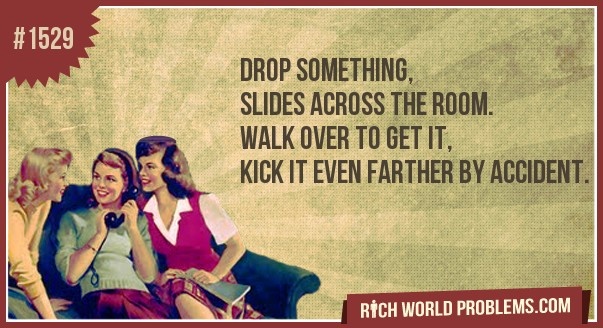
Photo: Mr Jones' Rules for the Modern Man © 2006 Dylan Jones. Published with permission from Hodder & Stoughton. Illustration: Mitt Roshin
Do you check your mail often? Let there be something interesting from us.
Why is it so important to dance like an idiot
Dancing is considered one of the most beneficial activities. Both physical, psychological and social. But we all know that there are two categories of "dancers". Some, at the very first sounds, the melodies begin to stomp, and swing to the beat, following the impulse, without hesitation start dancing. Others try to hide as far as possible from the dance floor and look with horror at the first category, praying that this fate will pass them. Both sides cannot understand each other. The first ones are perplexed as to what is the reason for the embarrassment. And the second ones are surprised how this idea can give pleasure at all. Often the main justification is phrase "I don't dance well. " Why is this self-deception?
" Why is this self-deception?
The authors of the self-development project The Book of Life explain that it doesn't really matter how you dance. “Dancing” and “dancing well” are two different things, like “rest” and “work”. The main thing in dance is not how a person looks from the outside, but the favorable effect of the dance itself. Any person, by default, "knows how" to dance well enough to feel this effect on himself.
Dancing is a great cardio workout. All the muscles of the body work in the dance, coordination, balance improve, endurance, flexibility and even reaction speed increase. And then, dancing is fun and interesting. It’s a lot easier to train yourself to dance regularly than it is to force yourself to go for a run.
Research shows the positive effects dance has on the brain. It not only improves mood, but also enhances cognitive functions: recognition of visual stimuli and decision making.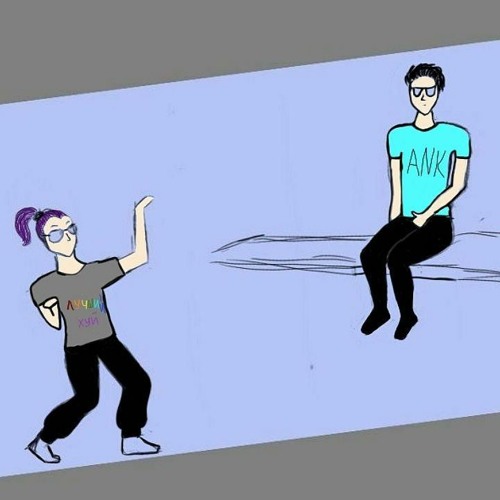 And that's not all: dancing reduces stress levels by stimulating the production of "happiness hormone" serotonin. They also contribute to the formation of new neural connections, especially in areas of the brain associated with behavior control, long-term memory and spatial orientation. Why do doctors use dance therapy in the treatment of patients with Parkinson's disease? Because it works.
And that's not all: dancing reduces stress levels by stimulating the production of "happiness hormone" serotonin. They also contribute to the formation of new neural connections, especially in areas of the brain associated with behavior control, long-term memory and spatial orientation. Why do doctors use dance therapy in the treatment of patients with Parkinson's disease? Because it works.
It is very important to know that dance is a multi-dimensional activity. In addition to the physiological, it also has a psychological dimension. In almost all cultures and at all times, dance was perceived as a ritual, useful not only for the body, but also for the soul. Dance is something more significant and deeper than just rhythmic foot movements.
Even among the ancient Greeks, great connoisseurs of rationality, logic and discipline, music and dance were the most important part of their culture. Or rather, dances - there are two hundred of them, for all occasions: from weddings and funerals to religious ceremonies and wars.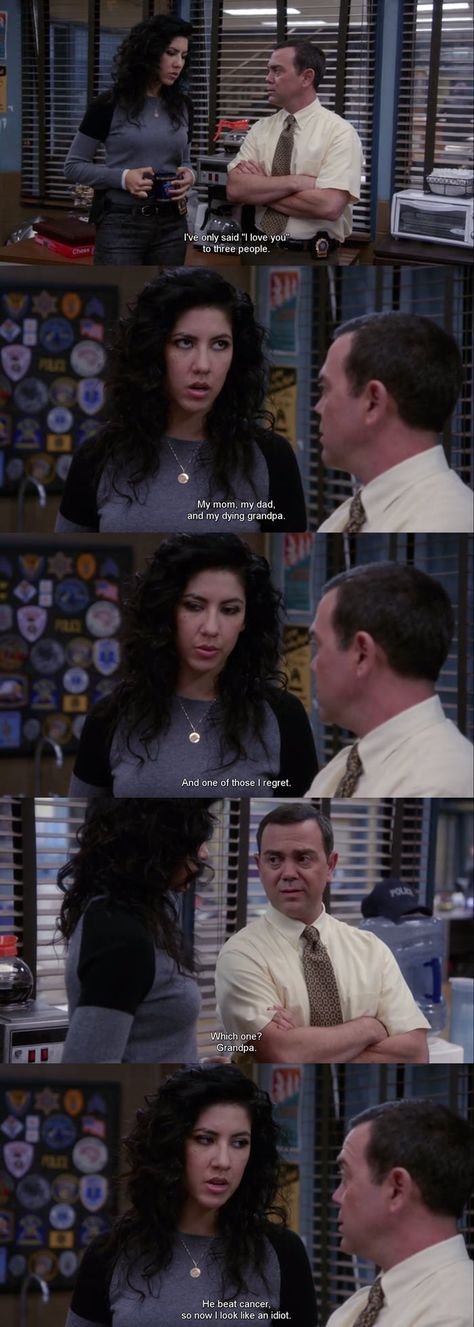 Probably, such a variety of dances was an attempt to find a balance between order and chaos. Probably, the ancient Greeks understood: the more rational and organized a person is, the more important it is for him sometimes to enter the element of spontaneity. Dancing was such an important part of their lives that even monuments were erected to the most skilled dancers. But this did not prevent the dance from remaining the most democratic occupation. At numerous ancient festivities, everyone danced.
Probably, such a variety of dances was an attempt to find a balance between order and chaos. Probably, the ancient Greeks understood: the more rational and organized a person is, the more important it is for him sometimes to enter the element of spontaneity. Dancing was such an important part of their lives that even monuments were erected to the most skilled dancers. But this did not prevent the dance from remaining the most democratic occupation. At numerous ancient festivities, everyone danced.
Dancing gives us the opportunity to bypass our ego control and feel like we are part of something bigger. Perhaps this is what we do not get in the modern world. According to some doctors, today we are experiencing an epidemic of loneliness. And the general self-isolation due to another epidemic only exacerbates the situation.
Dancing can help us regain a sense of community - establish a psychological connection with other people, the authors say The Book of Life . So what's stopping us? Fear of "looking like an idiot" . How to overcome this fear? Simple: it is enough to get rid of the dictates of desire "to look solid" . We need to understand and accept that the very essence of the healing dance that unites us with the world is to look as ridiculous as possible. The dumber the better. Isolation is no problem. The founder of Dbrain.io Dmitry Matskevich dances with friends online in self-isolation to relieve stress - and no one feels ridiculous.
So what's stopping us? Fear of "looking like an idiot" . How to overcome this fear? Simple: it is enough to get rid of the dictates of desire "to look solid" . We need to understand and accept that the very essence of the healing dance that unites us with the world is to look as ridiculous as possible. The dumber the better. Isolation is no problem. The founder of Dbrain.io Dmitry Matskevich dances with friends online in self-isolation to relieve stress - and no one feels ridiculous.
“Look worthy”, “inspire respect” are far-fetched things. If we discard them, it turns out that there is a lot of foolishness in each of us - nature made us so. We secretly cry at night, stumble upon jambs, break through closed doors, stumble out of the blue, fall, and when we try to leave beautifully, we laugh at ourselves, hiccupping at a crucial moment. Every day we do a lot of stupid things.
This is an integral part of our essence, which unites humanity.
